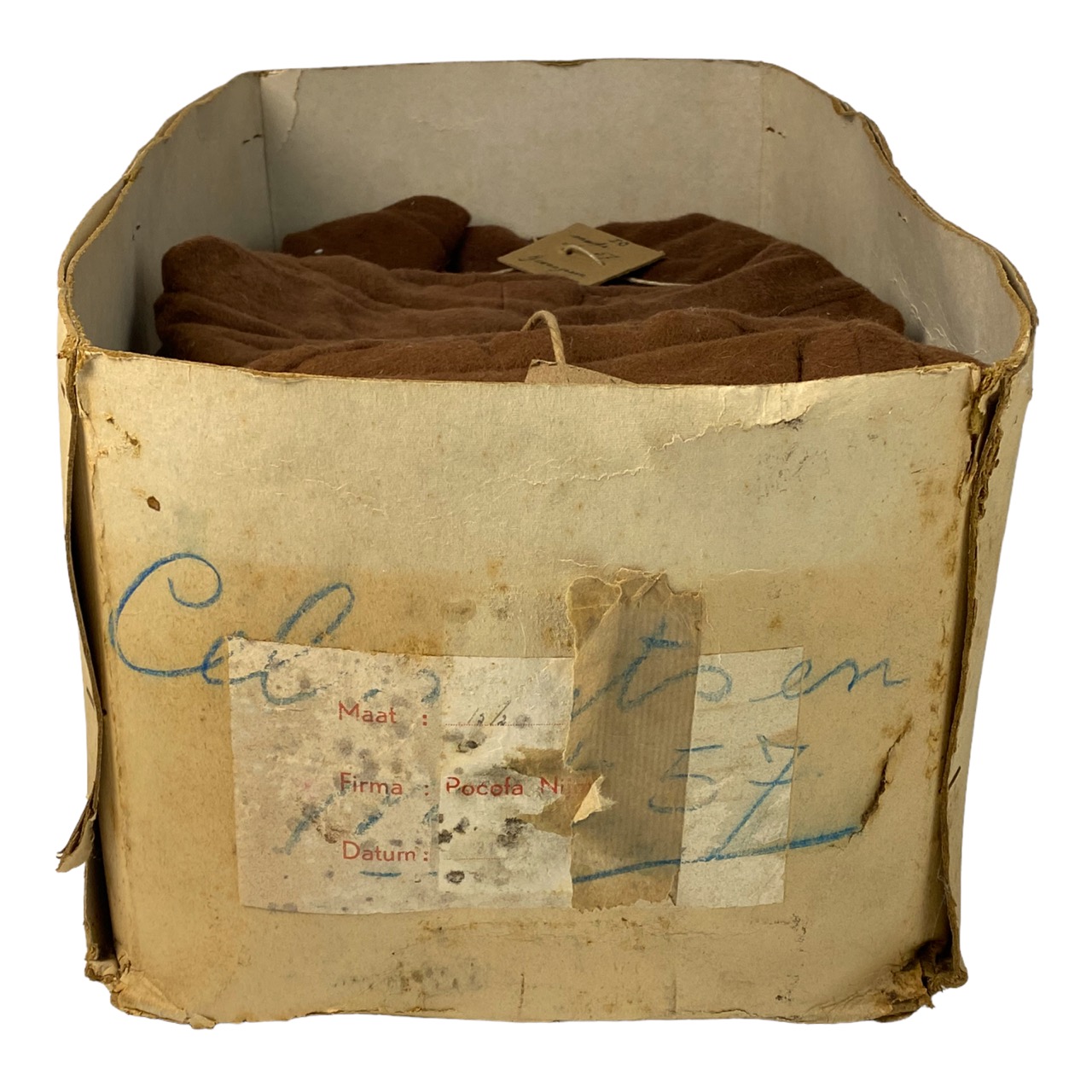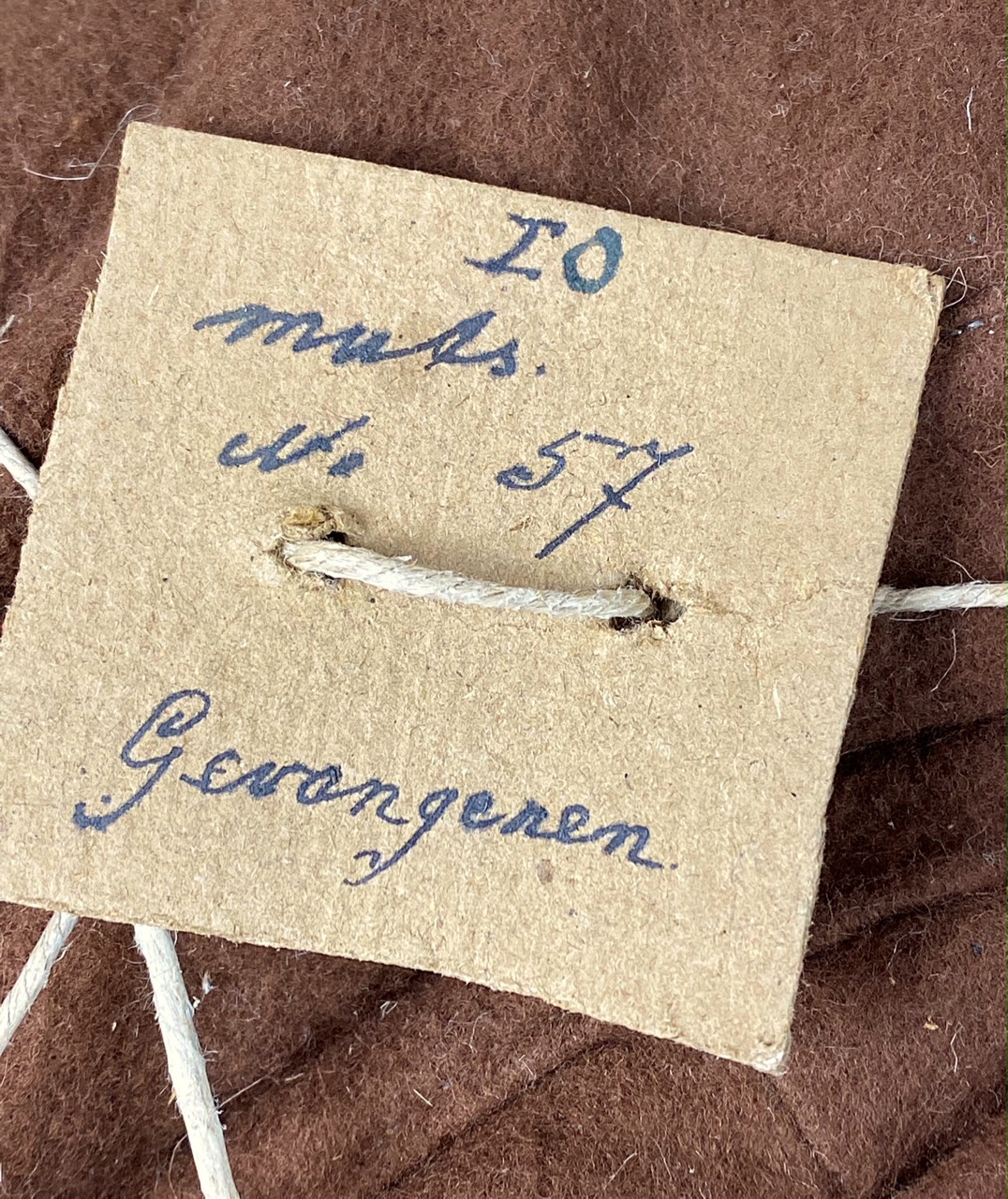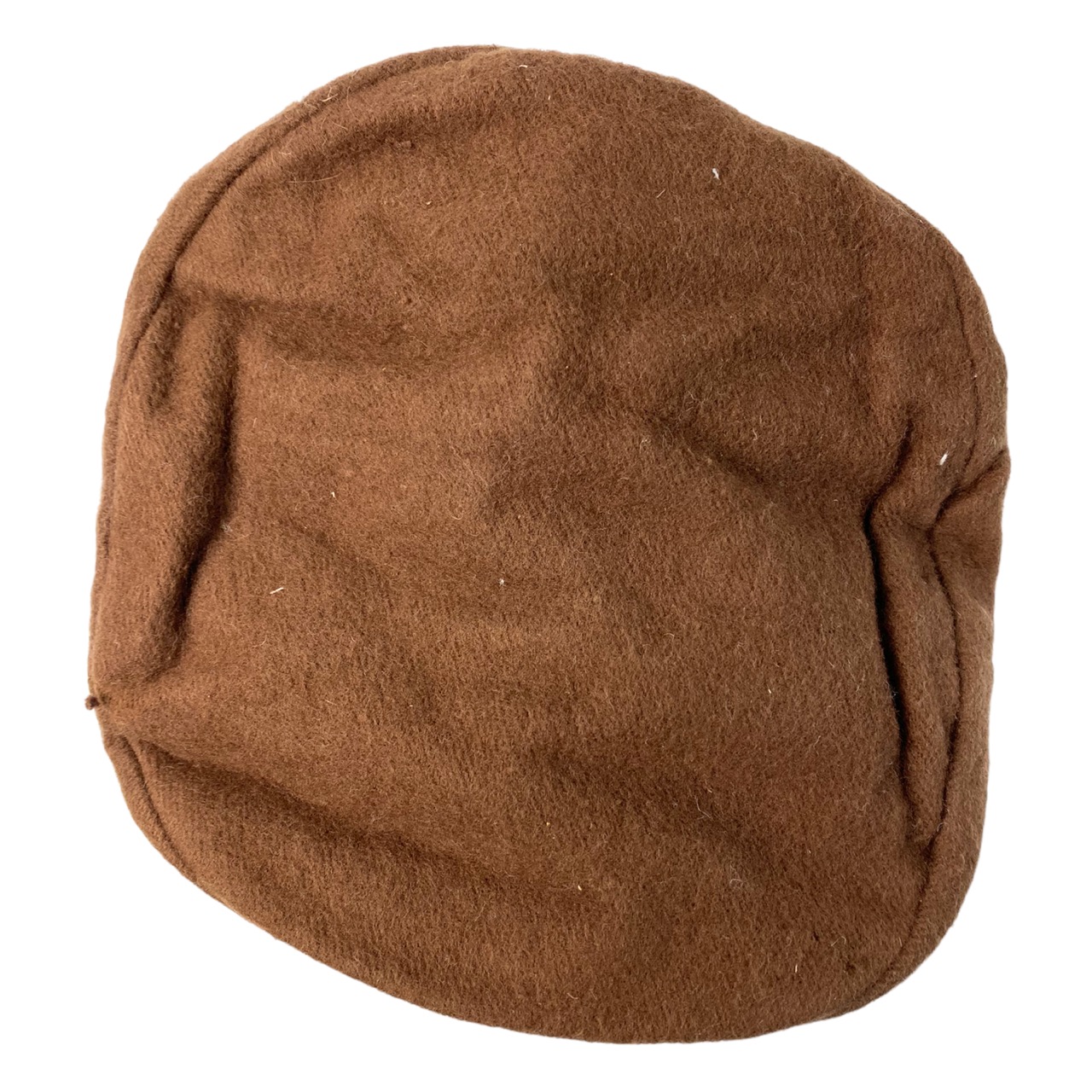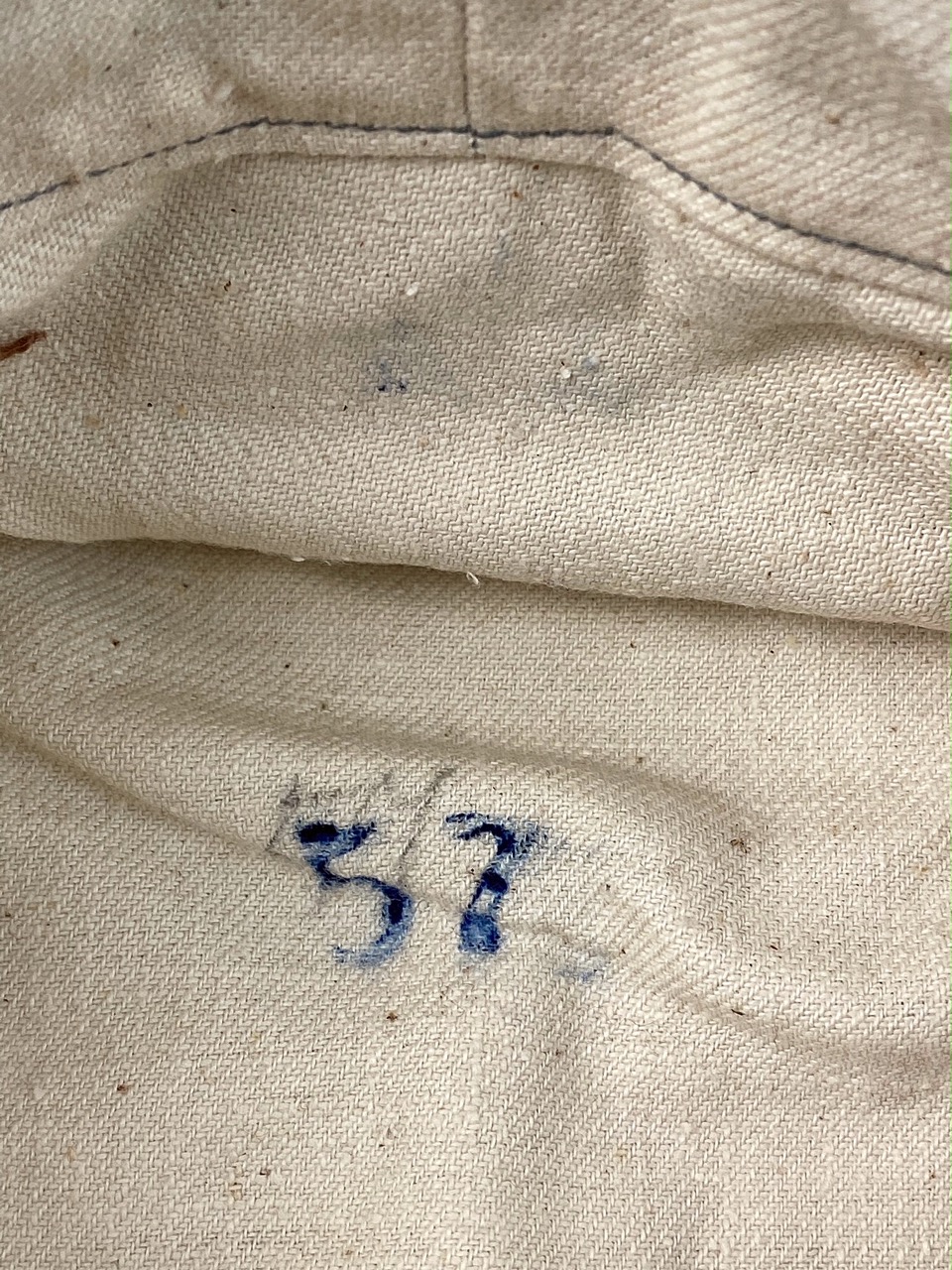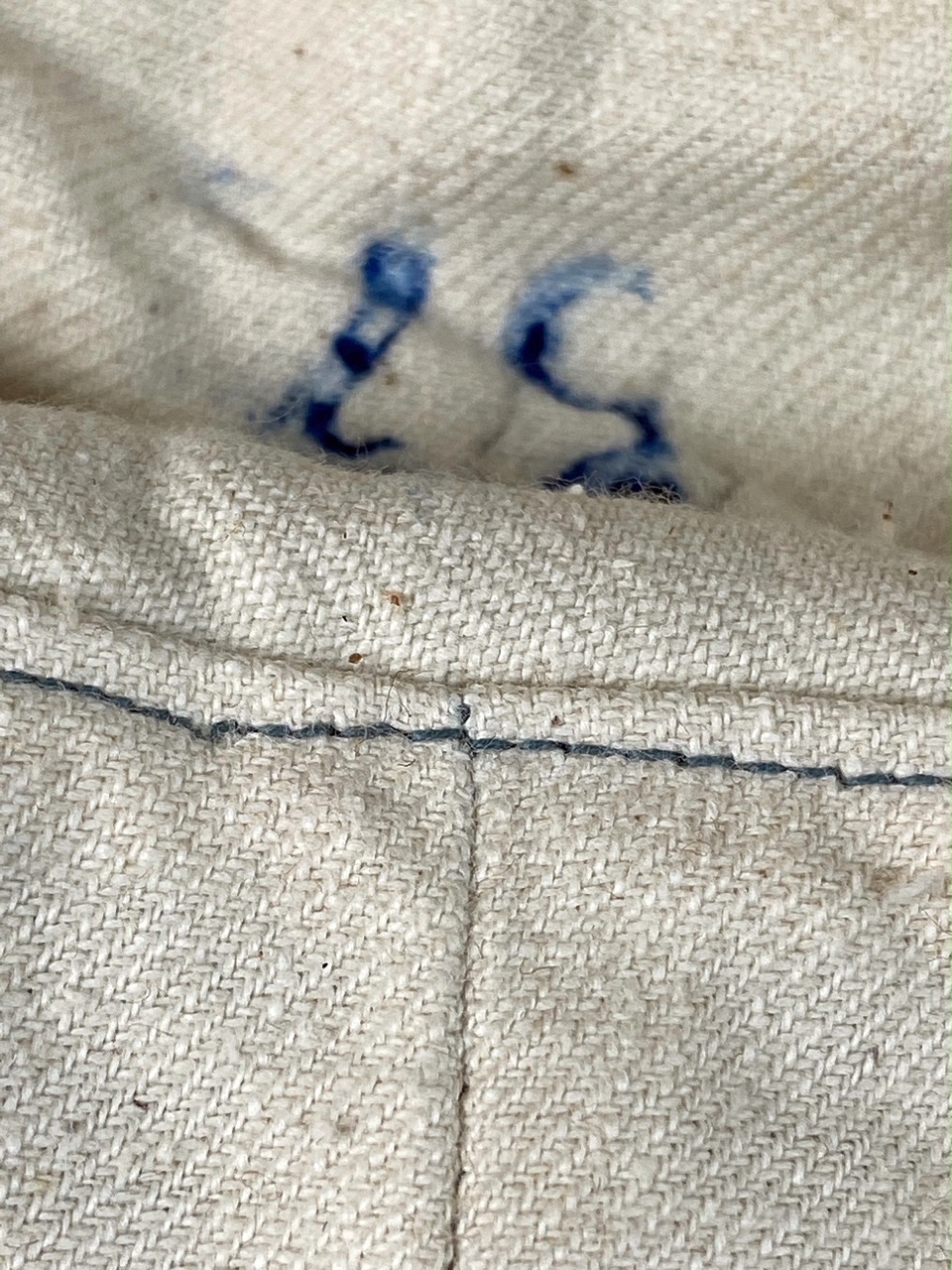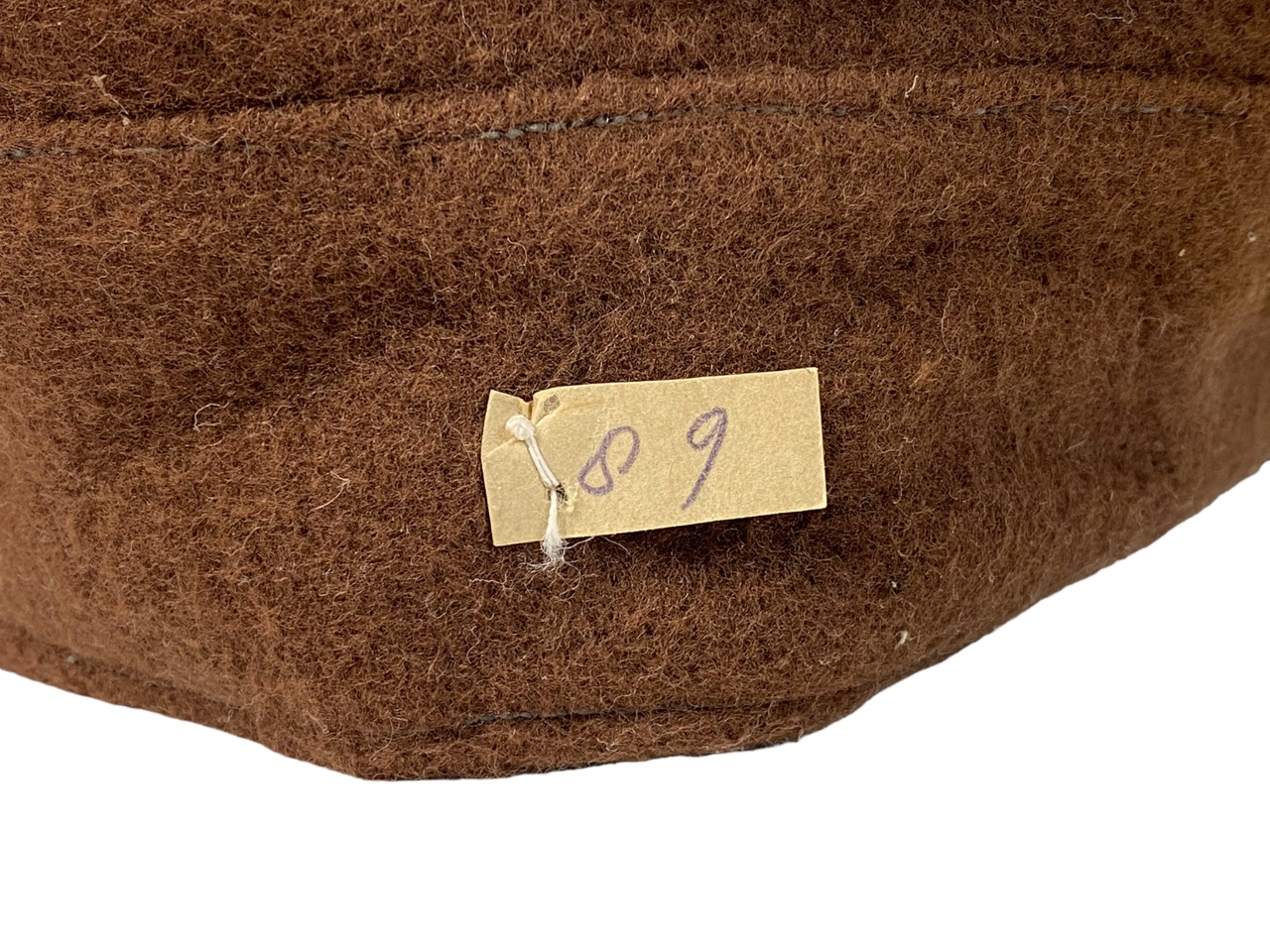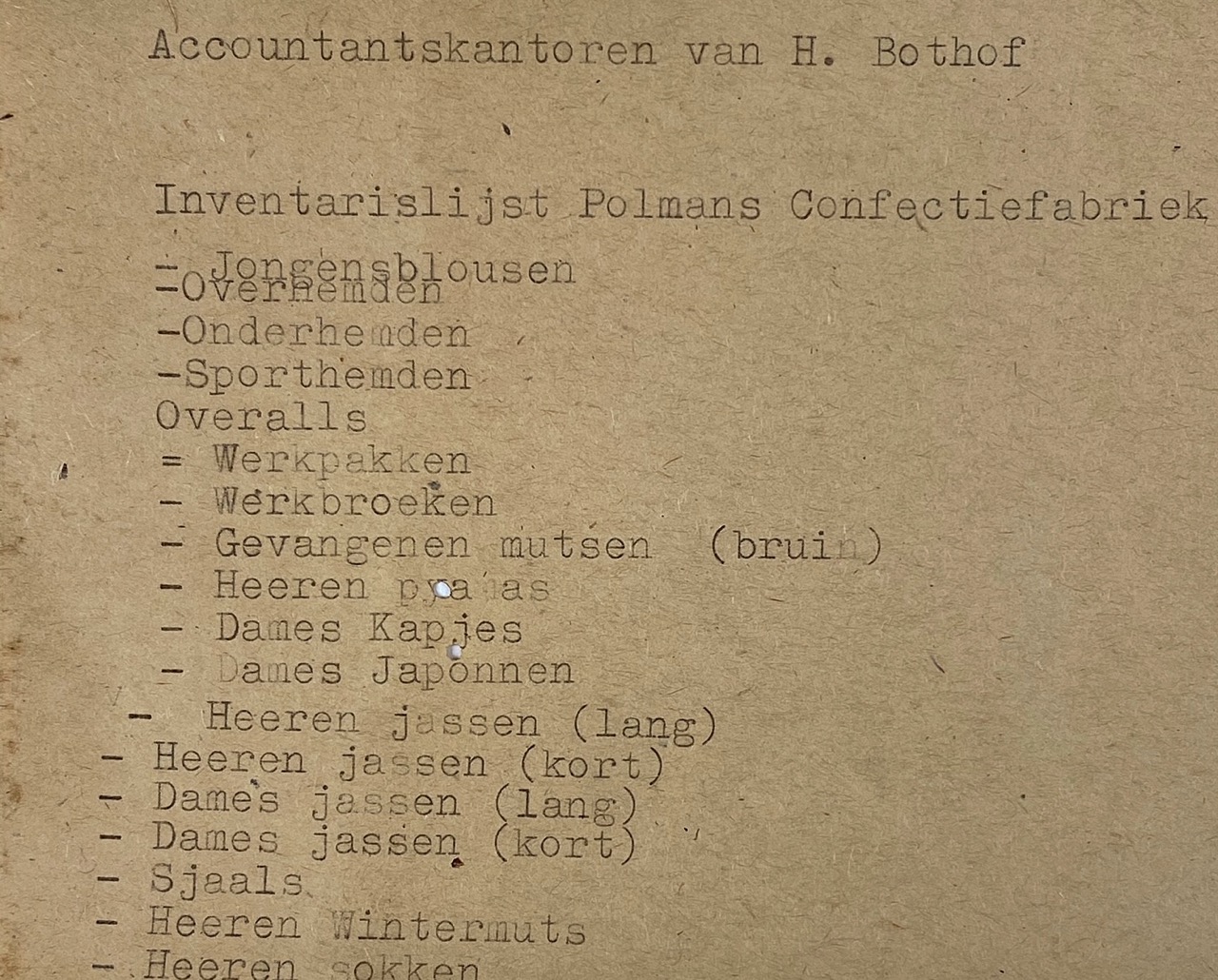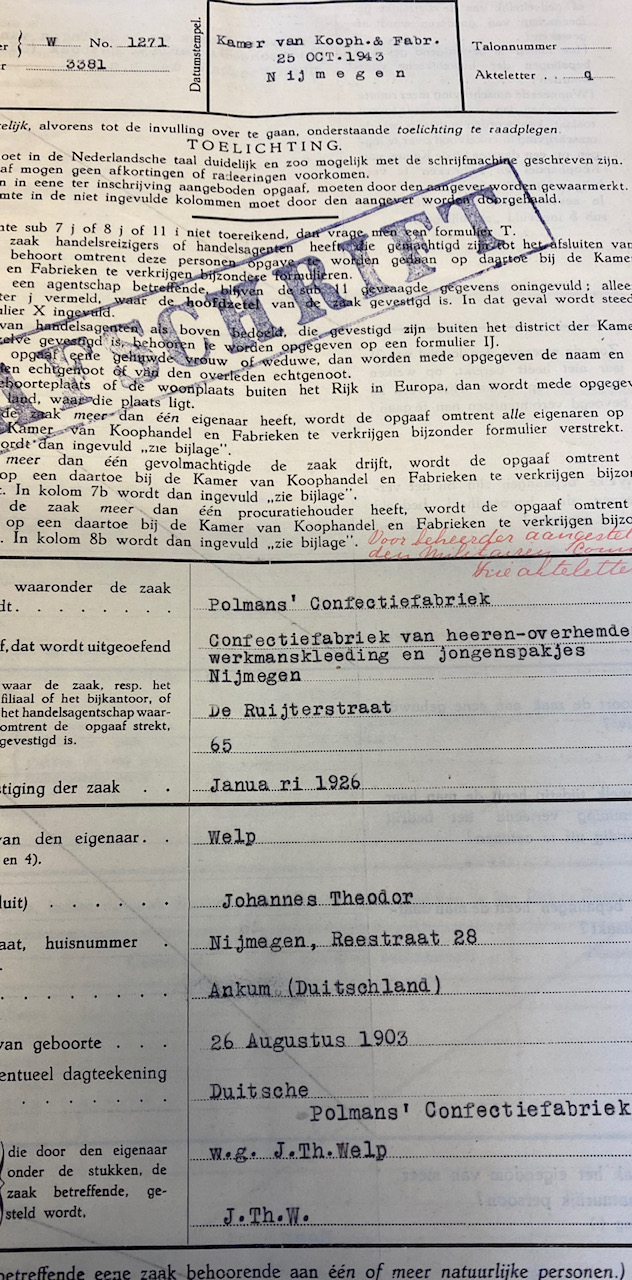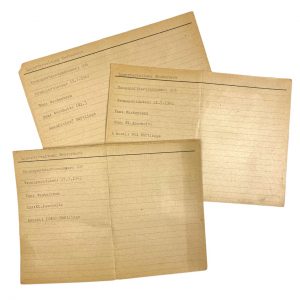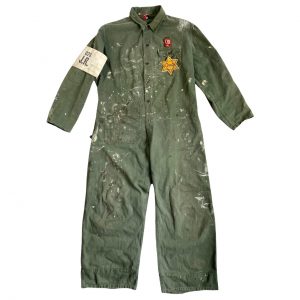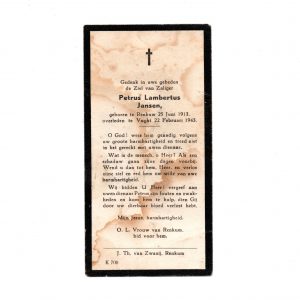Westerbork – Inmate hat
These hats are in unused condition and were worn by the prisoners in the Dutch transit camp durchgangslager Westerbork and the punishment prisons or also known as Deutsches Polizeigefängnis during World War II and were produced in 1942.
It has the same model as the concentration camp hat but the outside of this prisoners hat is brown.
The size of this hat is 57.
This hat was found a few years ago in a batch still in the original cardboard boxes and they were produced for durchgangslager Westerbork.
Each box contained 3 bundles of 10 prisoners hats and some boxes were dated and some still had paper labels.
The 10 hats are provided with a string with a cardboard label with the inscription: 10 Pilow hats – (Size) prisoners.
These hats were produced by the jewish Gersons brothers of the company Pofeca or also known as the Polman’s Confectiefabriek in Nijmegen.
Initially, photos surfaced showing the same hats being worn during forced labor activities in durchlangslager Westerbork and, after further investigation in the National Archives, ‘brown prisoners hats’ were found on the inventory list (1942) of the company and on the list of their accountant H. Bothof.
The brothers were eventually deported to Auschwitz and the company was sold through the NAGU (Niederländische Aktiengesellschaft für Abwicklung von Unternehmungen) for 46,000 guilders to the German Johannes Theodor Welp in 1943.
In this lot the sizes 55/56/57/58 were found and these are marked on the inside with the size indication and some hats also have a small paper tag sewn onto the front with the size written on it.
Camp Westerbork
In 1939 a refugee camp was built in Westerbork to receive Jewish refugees from Germany.
On July 1, 1942, the Germans started using the camp as a transit camp.
From 1 July to 1 September 1942 Erich Deppner was a Lagerkommandant.
Then until 9 October 1942 they became Josef Hugo Dischner and a few days later Bohrmann.
From October 12, 1942 to April 11, 1945, the SS officer Albert Konrad Gemmeker was the camp’s commander.
The number of German SS men for the entire camp thus amounted to 20 to 30 men.
They were stationed in the nearby camp Hooghalen (Heidelager).
From July 15, 1942 to September 13, 1944, more than 100,000 prisoners were deported from camp Westerbork by train. Only 5,000 Jews and 32 Roma who were deported from camp Westerbork survived the Second World War.
On April 12, 1945, the Canadians liberated 876 Jewish prisoners in camp Westerbork.

